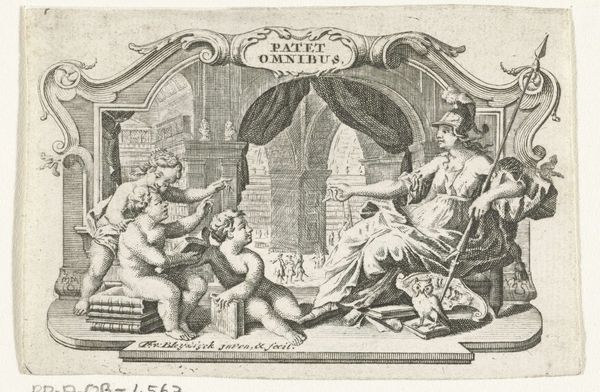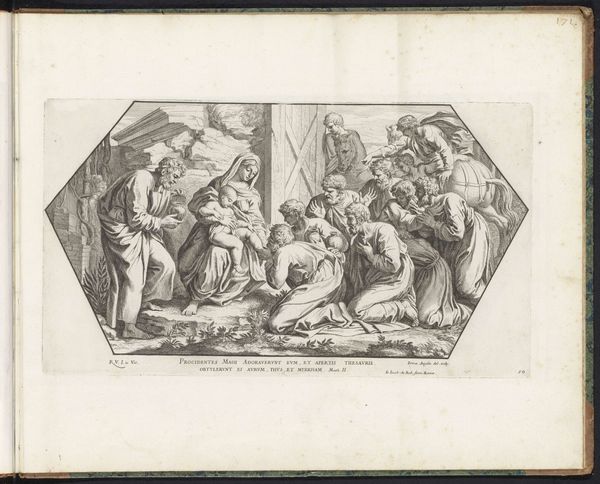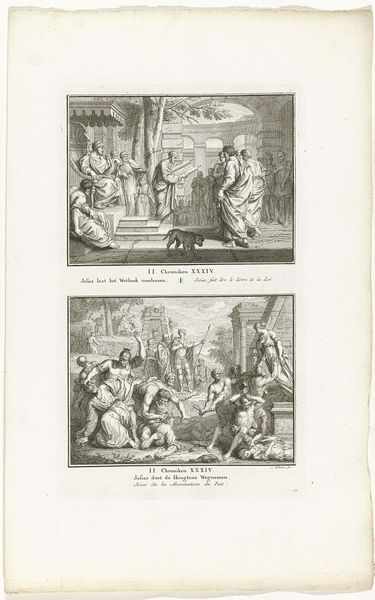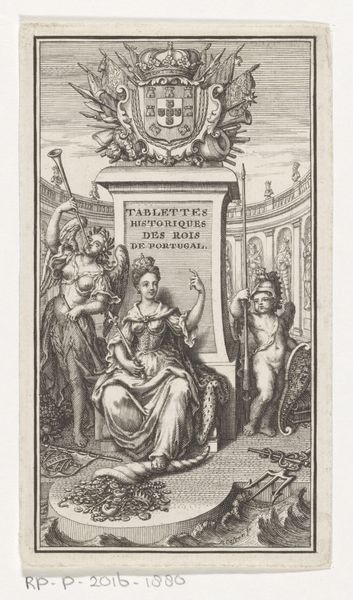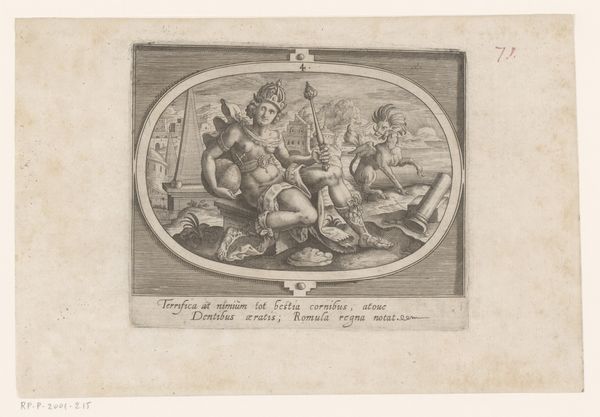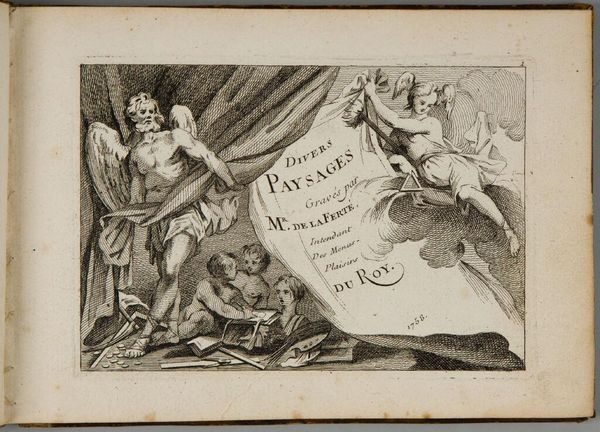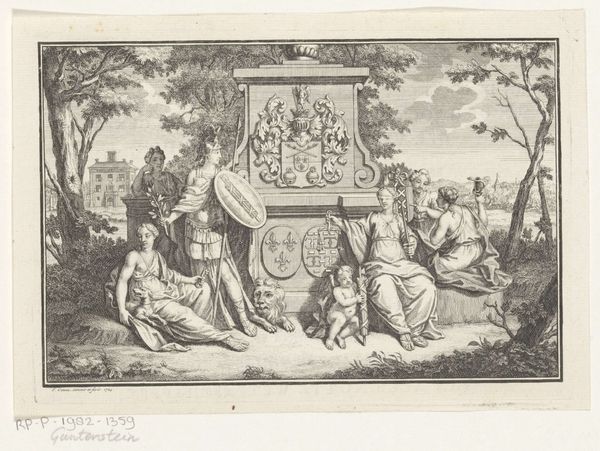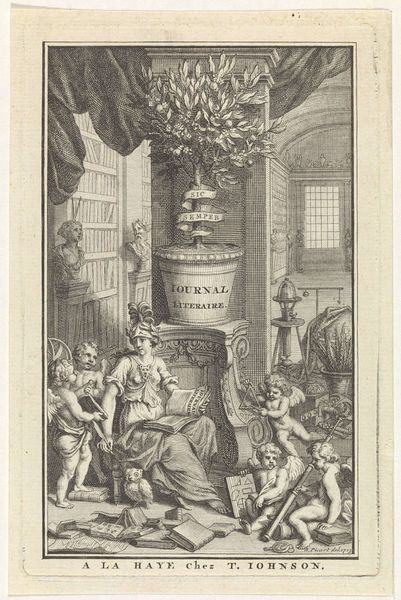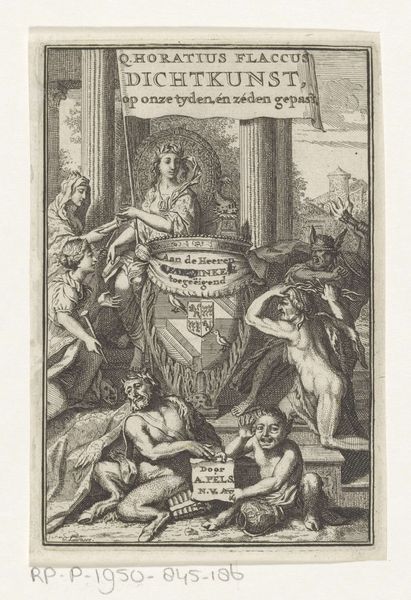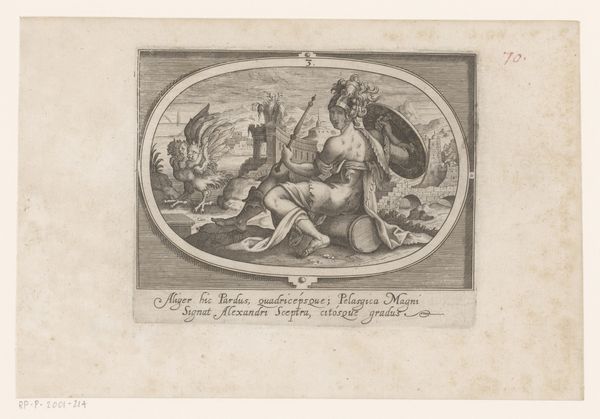
Titelprent voor 'Les plans et profils des principales Villes et lieux considerables du duché de Gueldre' van Sébastien Beaulieu de Pontault 1666 - 1670
0:00
0:00
print, engraving
#
allegory
#
baroque
# print
#
figuration
#
history-painting
#
engraving
Dimensions: height 107 mm, width 154 mm
Copyright: Rijks Museum: Open Domain
This print, made by Romeyn de Hooghe, probably around the turn of the 18th century, is made using etching and engraving. These are both processes of incising lines into a metal plate, which is then inked and printed. Look closely, and you can see the contrast between the bold etched lines that define the figures, and the more delicate engraved lines that add detail and tone. The combination of these techniques allowed de Hooghe to create a rich and complex image, full of texture and depth. Prints like this were essential to the circulation of knowledge in early modern Europe. They were a relatively inexpensive way to reproduce images and information, and to disseminate them widely. This print, as a frontispiece, signals the careful labor and craftsmanship that went into the mapping of Gueldre. It elevates the act of surveying to an art, making it clear that printmaking was a crucial part of this process. The skilled handiwork evident here reminds us that these prints were not just functional objects, but also works of art.
Comments
No comments
Be the first to comment and join the conversation on the ultimate creative platform.

